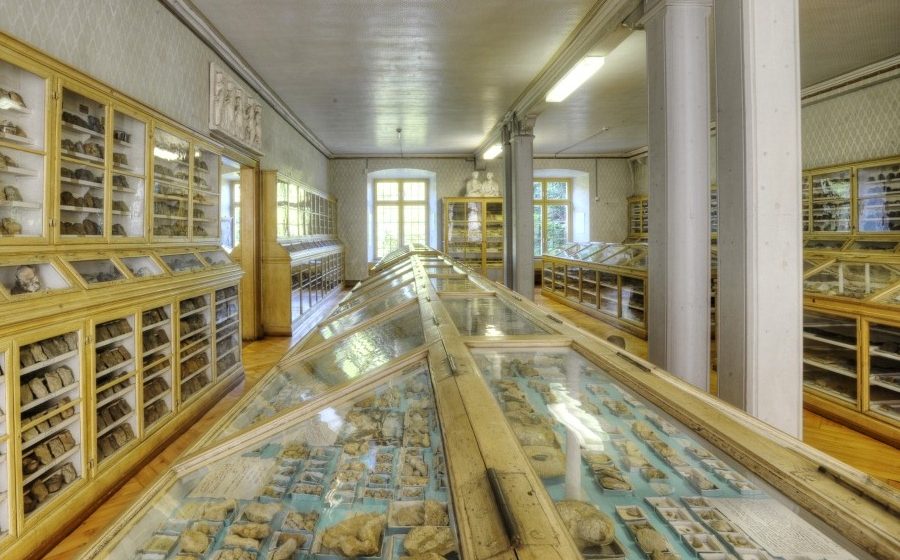An overwhelming wealth of fossils, minerals and rocks welcomes the visitor on the ground floor of the F.F. collections. The exhibition and showcases date from the museum’s construction period in the late 1860s. The form of presentation, which is hopelessly outdated by today’s museum didactic standards, is now deliberately retained as a “museum within a museum”. The outdated representation should also not hide the scientific rank of the exhibits.
The fossils in the paleontological departments – mainly in the showcases in the middle of the room – are arranged according to geological era and range from fossils from the Cambrian (500 million years ago) to bone finds from the Quaternary (since 2.5 million years). A large cabinet showcase shows the finds from Höwenegg (City of Immendingen), which were recovered with the help of the House of Fürstenberg in the 1950s: the approximately 10 million-year-old primeval horse Hipparion and the huge Deinotherium giganteum, a “Hauer-Elefant” with a shoulder height of around 3.5 meters.
A second display case presents fossils from Öhningen on Lake Constance that are around 15 million years old: mainly fish and plants, along with birds and snakes. The Öhningen finds aroused widespread enthusiasm at the end of the 18th century. When the demand could no longer be met by new finds, some Öhningers turned to forgeries. A small quail in the Fürstenberg Collection turned out to be an artistic work of fishbones!

